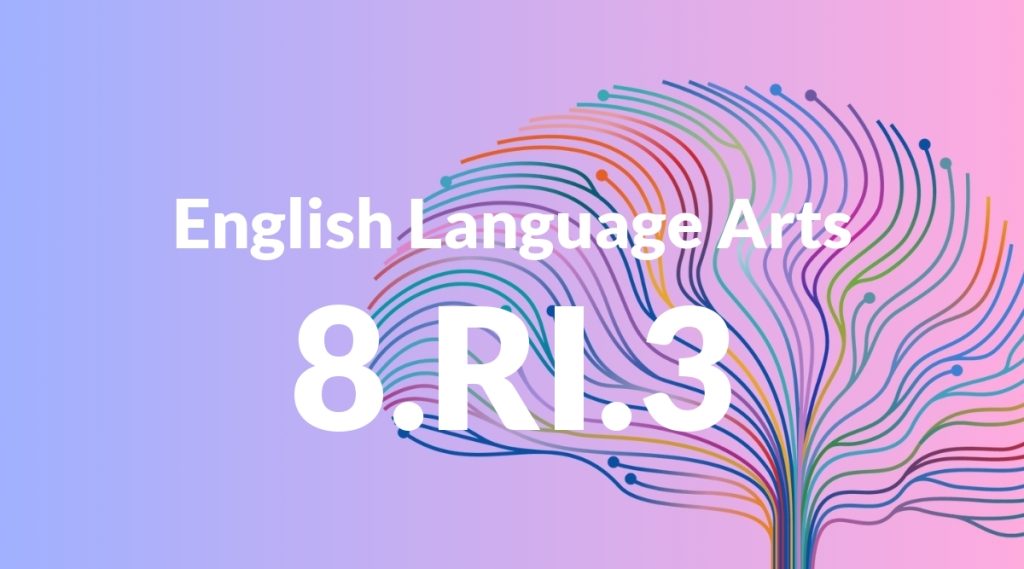Standard: 8.RI.3 – Analyze how a text makes connections among and distinctions between individuals, ideas, or events (e.g., through comparisons, analogies, or categories).
Grade level: Grade 8
Subject: English Language Arts
Domain: Reading: Informational Text
Teacher Overview
This standard focuses on helping students analyze how texts make connections and distinctions between individuals, ideas, or events. This skill is crucial for understanding complex texts and for developing critical thinking abilities. It also lays the groundwork for more advanced analytical skills that students will need in high school and beyond. Students should be familiar with identifying main ideas and supporting details, and should understand different text structures. These foundational skills are necessary for recognizing how texts make connections and distinctions.
Mastering this standard will enable students to critically evaluate texts and understand the relationships between ideas and events. This prepares them for more advanced analysis and synthesis of information in high school.
Common Misconception 1
A common misconception is that connections between ideas are always explicitly stated. This is incorrect because many texts require readers to infer connections based on subtle clues and context.
Intervention 1
To address this misconception, provide students with practice texts that require inference. Use guided questions to help them identify implicit connections.
Common Misconception 2
Another misconception is that all distinctions are obvious and straightforward. This is incorrect because many distinctions require deeper analysis and understanding of context.
Intervention 2
To remediate this misconception, encourage students to think critically about the text and to look for less obvious distinctions. Use examples and discussions to highlight the importance of context.
Prerequisite Knowledge
Students should have a basic understanding of how to identify main ideas and supporting details in a text. They should also be familiar with different text structures (e.g., cause/effect, compare/contrast) and how they help organize information.
Subsequent Knowledge
After mastering this standard, students will be able to critically evaluate texts by recognizing the relationships between ideas and events. This will prepare them for more advanced analysis in high school, including synthesizing information from multiple sources and constructing well-supported arguments.
Instructional Activities
- Compare and contrast two historical events using a Venn diagram.
- Analyze a biography and identify how the author connects different life events.
- Read a scientific article and categorize the main ideas using a graphic organizer.
- Evaluate a political speech and identify the analogies used to support arguments.




